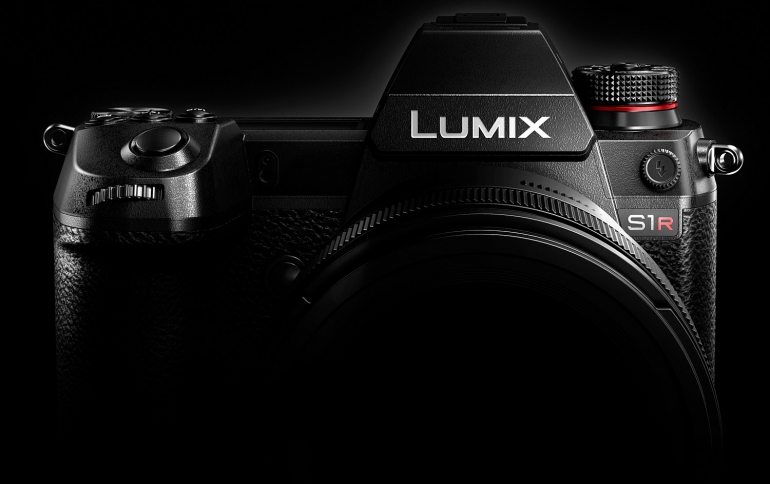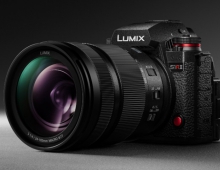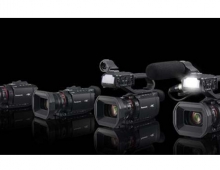
Panasonic Develops Two LUMIX S series Models of Full-Frame Mirrorless Camera
Panasonic has developed two models of its first Digital Single Lens Mirrorless camera with a 35 mm full-frame image sensor, the LUMIX S1R and the S1.
These models are equipped with the 4K 60p video recording function and the Dual I.S. image stabilization system. As part of the LUMIX S series, Panasonic aims to release them on the global market early 2019.
In 2008 Panasonic released the LUMIX G1, the world's first Digital Single Lens Mirrorless camera. Over the ten years since then, Panasonic has continued to lead the industry with product innovations, such as the first camera supporting 4K video recording, and cameras equipped with the Dual I.S. (Image Stabilization) system, combining stabilization both inside the camera unit and the lens.

In recent years, social media video-sharing has gained popularity and as a result, more and more people are enjoying a hybrid of photos and videos, widening the range of expression in content production. This new field prompted the need for a new type of camera that goes beyond the boundaries of traditional photos and videos.
With this in mind, Panasonic adopted the concept, 'Fuel the Photographers' Creative Vision' to develop a Digital Single Lens Mirrorless camera with a strong focus on the expressive capabilities for both photos and videos. The company will bring these cameras to market as part of the LUMIX S series.

Panasonic says that the new cameras are user-friendly and offer essential tools for professional photography and videography, as well as incorporate an entire array of Panasonic technology.
The key features of the newly developed cameras, the LUMIX S1R and the S1, are as follows.
- Newly-developed 35 mm full-frame image sensor and image processing engine. (Effective pixels: approximately 47M for the S1R and 24M for the S1)
- Support for 4K 60p video recording
- Full-frame camera equipped with Dual I.S. (Image Stabilization), enabling handheld shots for dark or distant scenes that would previously have required a tripod or other equipment.
- A double slot for XQD memory cards and SD memory cards, the first for Panasonic; and a rugged triaxial tilt LCD, emphasizing ease of use and supporting professional photography and videography.
- Leica Camera's L-Mount, making it possible to use interchangeable lenses that meet the L-Mount specifications of the Leica Camera and Sigma.
- Expressiveness is further enhanced by increasing options for interchangeable lenses.
Panasonic will also expand its lineup of LUMIX S series compatible lenses, developing more than ten by 2020, including a 50 mm/F1.4 fixed-focus lens, 24-105 mm standard zoom lens, and 70-200 mm telephoto zoom lens.
For the LUMIX G series of Micro Four Thirds Digital Single Lens Mirrorless cameras, Panasonic has started developing a LEICA DG VARIO-SUMMILUX 10-25 mm F1.7 lens that will achieve the first zoom with maximum aperture of F1.7 for the entire range.
In addition, Panasonic has announced the launch of LUMIX PRO, a service and support program for its LUMIX professionals. This program has been designed to ensure that professionals can receive service and repair benefits globally. The service is launching in the U.S. market next month.
Prototypes of the new cameras and lenses introduced above will be exhibited at Photokina 2018.
The L-Mount Alliance: a strategic cooperation between Leica Camera, Panasonic and Sigma
At the company's press conference prior to the opening of photokina 2018, Leica Camera AG, Panasonic and Sigma announced a strategic partnership. The 'L-Mount Alliance' is a collaboration that enables Panasonic and Sigma to make use of the L-Mount standard developed by Leica for their own developments and to offer both cameras and lenses utilising this lens mount.
Due to their numerous interchangeable components, system cameras are versatile and can be individually configured for a wide range of photographic needs. Here, the bayonet is the most important interface, because the lens makes a decisive contribution to imaging performance and, in turn, to the quality of the final results. Thanks to the partnership between Leica, Panasonic and Sigma, customers will be able to choose from a much wider selection of cameras and lenses without having to limit themselves to a particular brand, as all three brands will share the same proprietary bayonet mount.





















